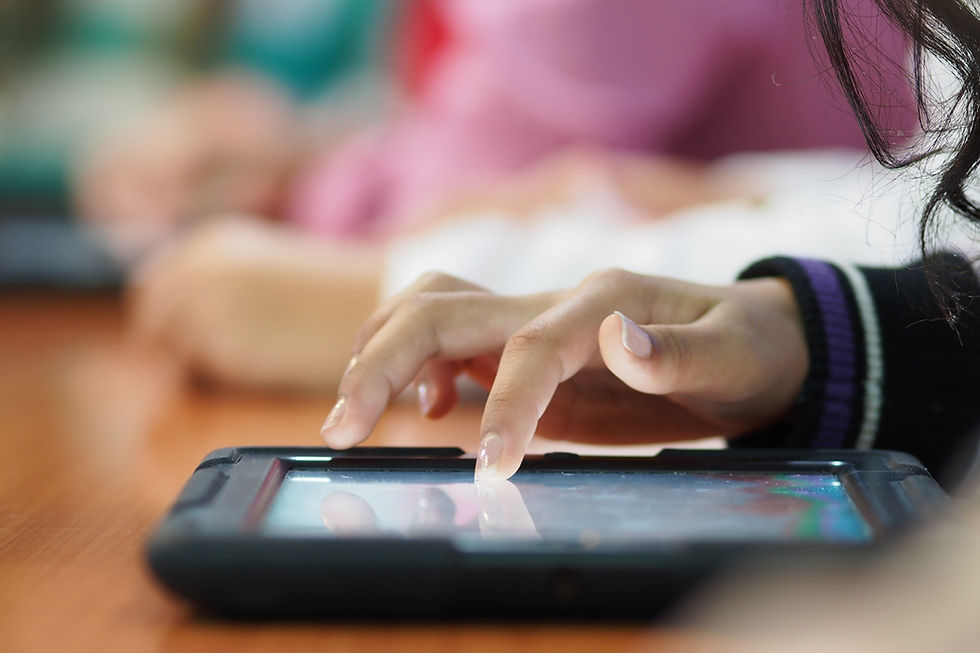Be In The Know With The Social Media Lingo
- May 17, 2021
- 3 min read

If your business is active on social media, pat yourself on the back! You’ve already conquered a huge step towards greater brand presence. Whether you’re taking care of it yourself or you have a dedicated professional handling things, we are so glad you understand the importance of being active online. However, do you understand what the results of your posts and ads actually mean and how you can use those results to measure the performance? If don’t, well, you’ve come to the right place.
Tracking (and understanding) how well your posts and advertisements are performing is crucial to creating and executing a successful digital marketing strategy. But, we know social media has a language of its own and understanding the terms and acronyms can be overwhelming. That’s why we’ve put together this helpful guide!
Audience: Your audience is pretty simple. It is the group of people that may see your content. Audiences are a combination of people who like and follow your page and anyone else who has seen or interacted with content on your page. Your audience is key to growing and maintaining brand awareness!
Engagement: Did someone like your post, share it, comment or click a link? Anytime someone interacts with your post, it’s recorded as an engagement. Often, the higher the engagement on a post, it is likely it will be seen by more people.
Reach: There are 2 different types of reach that social media analytics report:
Post Reach: This shows how many people viewed a single particular post.
Page Reach: This reflects how many people viewed all the content on your page.
Don’ forget, reach can also be organic or paid. Organic shows how many people saw your post on their own (likely because they already like your page). Paid reach means you used paid advertisements to show your post to a wider audience and it showed up in their newsfeed regardless of whether they like your page or not.
Impressions: This is the number of times your content shows up on the feed. It’s important to note that reach and impressions are not the same. If 1 person sees your post 4 times, it will be reported as 1 reach and 4 impressions.
Tip: when running paid ads, you want to strive for your impressions result to be 3 times higher than your reach. This means that on average, each person who saw your ad, saw it 3 times. This helps your audience retain your information.

Clicks: This is counted when someone clicks on content on your post or page.. Clicks can come from photos, links, hashtags and more.
Cost Per Click (CPC): This is the average cost for each click on your ad. This means that if your ad has a budget of $300.00 and people clicked on it 485 times, your cost per click would be $0.62. You can also view your CPR (cost per result). This is similar, but it places emphasis on the type of ad you were running. If you optimized your ad for link clicks. Your CPR would be the cost of the clicks on the link on your ad.
However, don’t fret about seeing the word ‘cost’! This doesn’t mean extra when someone clicks your ad. The cost is part of the overall budget you set when creating the ad and you can optimize for a bid cap (meaning you won’t be charged more than the set amount). But remember, if your CPC or CPR is high, you need to reevaluate the advertisement to try and lower the CPC cost and make your dollar go further. Afterall, you want to achieve the best ROI possible, don’t you?
User Generated Content (UGC): This is any type of content that has been posted by the public on your social media platforms. UGC can be in the form of photos, video or text. UGC can be incredibly helpful in building a relationship and trust between your brand and your audience.
Call to Action (CTA): If you want your online visitors to make a purchase on your website, message your page, book an appointment or a variety of other actions, you can add CTA buttons to your social media pages and posts. CTA buttons help direct your visitors to a place outside your social media profiles. These clickable buttons are often found on the bottom of posts or the top of the business page/profile. They usually have common phrases such as “shop now”, “book now” or “learn more”.
The Gabby Girl Digital team is knowledgeable in a variety of analytics, metrics and terms to ensure your digital marketing & advertising efforts are efficient and effective. If you have questions about your social media analytics, send us a message. We are always happy to help.




Comments